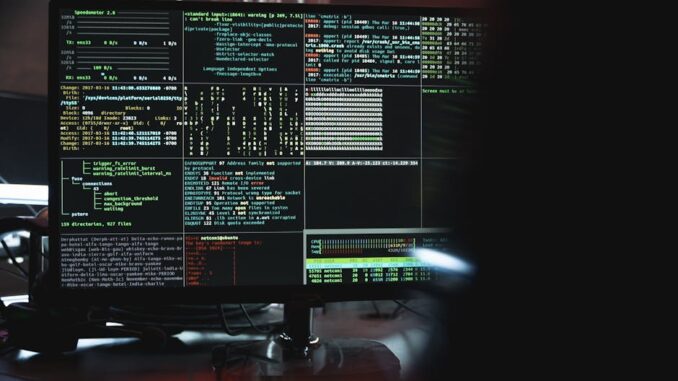
Summary
The 2024 Snowflake attacks highlighted critical vulnerabilities in cloud security, impacting hundreds of organizations and millions of individuals. Hackers exploited stolen credentials, primarily targeting accounts lacking multi-factor authentication. The attacks underscore the importance of robust cybersecurity practices, particularly in the healthcare sector, where breaches can have devastating consequences.
** Main Story**
The Snowflake attacks of 2024, well, they really shook things up in the cybersecurity world, didn’t they? It exposed a serious vulnerability in how we think about cloud security, and the impact was felt by millions. It’s not like Snowflake’s systems themselves had a flaw, instead, the ShinyHunters group, possibly with the help of someone from the U.S. Army, got in using stolen credentials. These credentials came from a bunch of places, including infostealer malware and a supply chain issue at EPAM Systems. And with those stolen keys, they unlocked access to the data of a ton of companies, AT&T and Ticketmaster, among them, with a lot of victims in the already stressed healthcare sector. So, let’s break down how these attacks happened, what the impact was, and what we can learn to hopefully stop similar things from happening again.
How it All Went Down
The attacker’s strategy was, honestly, pretty simple, yet effective. A bit too effective, if you ask me:
-
Gathering Credentials: ShinyHunters got their hands on a massive amount of usernames and passwords using malware like VIDAR, REDLINE, and METASTEALER. These programs snuck onto people’s devices, often through things that seemed harmless, like games or illegal software downloads. Some of these credentials were old, like from 2020. Which shows why you need to update your passwords more often.
-
Using the Stolen Goods: These credentials were being sold and traded on the dark web and on Telegram channels. With them, the attackers gained access to Snowflake accounts. Shockingly, about 80% of these accounts didn’t have multi-factor authentication (MFA). So, all it took was a username and password, and a lot of people, aren’t using secure passwords. This is where MFA could have really helped.
-
Taking the Data and Asking for Money: Once they were in, ShinyHunters grabbed the data from Snowflake’s cloud storage. Then they asked for ransom, from hundreds of thousands to millions of dollars, threatening to expose or delete the data if they weren’t paid. I had a client last year, small marketing company, they didn’t have MFA enabled. They got hit with a similar attack, luckily the damage wasn’t too bad because they had good backups.
The Mess Left Behind: Healthcare and More
The Snowflake attacks had a wide-reaching impact, particularly on the healthcare industry. Take AT&T, for example, which stored call metadata in their Snowflake environment. They had data from around 110 million customers exposed. And while the content of the calls and texts was secure, the breach did raise some pretty serious questions about the safety of personal info. In addition, the attack affected healthcare providers that use platforms like Change Healthcare. Change Healthcare had issues after a related ransomware attack, resulting in delays in electronic payments and medical claims processing. This, in turn, disrupted the service provided to patients, it just goes to show how interconnected, and vulnerable, the healthcare system can be.
Lessons Learned: A Turning Point for Security
The Snowflake incident should make everyone stop and think. It highlights how important robust cybersecurity is in today’s connected world. There are a few key points to take away:
-
Identity is Everything: The attacks showed that stolen credentials can be just as bad as someone hacking into your network. Protecting user identities and their access details needs to be a top priority in the cloud era.
-
MFA is a Must-Have: Not having MFA on most of the affected accounts was a major weak spot. Adding MFA makes your security a lot stronger, it gives you that extra layer of defense against unauthorized access.
-
Password Rules Matter: Using old or easy-to-guess passwords makes you an easy target for hackers. It’s essential to update your passwords regularly and have strong password policies.
-
Think About Your Supply Chain: The issue with EPAM Systems shows how vulnerable supply chains can be. Organizations need to carefully check their third-party providers and make sure they have strict security measures in place.
The Snowflake attacks, they’re a turning point for cybersecurity. They remind us that even the best cloud platforms can be vulnerable if basic security practices are ignored. Going forward, identity protection, MFA, and strong passwords, these aren’t just options anymore, they’re a must.


Given the reliance on stolen credentials, what strategies beyond MFA could organizations implement to proactively detect and mitigate compromised accounts before significant data exfiltration occurs?
That’s a great question! Beyond MFA, focusing on user behavior analytics can be key. By establishing baseline activity, we can identify anomalies indicative of compromised accounts much faster. We should also consider real-time threat intelligence feeds and automated responses to suspicious activities. What are your thoughts?
Editor: MedTechNews.Uk
Thank you to our Sponsor Esdebe
The mention of EPAM Systems highlights the often-overlooked risk of supply chain vulnerabilities. What steps can organizations take to better assess and manage the security posture of their third-party vendors, especially regarding access to sensitive data environments like Snowflake?
That’s a really important point! It’s also useful to implement robust vendor risk management programs, including regular security audits and penetration testing. Defining clear security expectations in contracts and continuously monitoring vendor activity for deviations are crucial for maintaining a strong security posture. It can be a lot of work but it’s work worth doing!
Editor: MedTechNews.Uk
Thank you to our Sponsor Esdebe